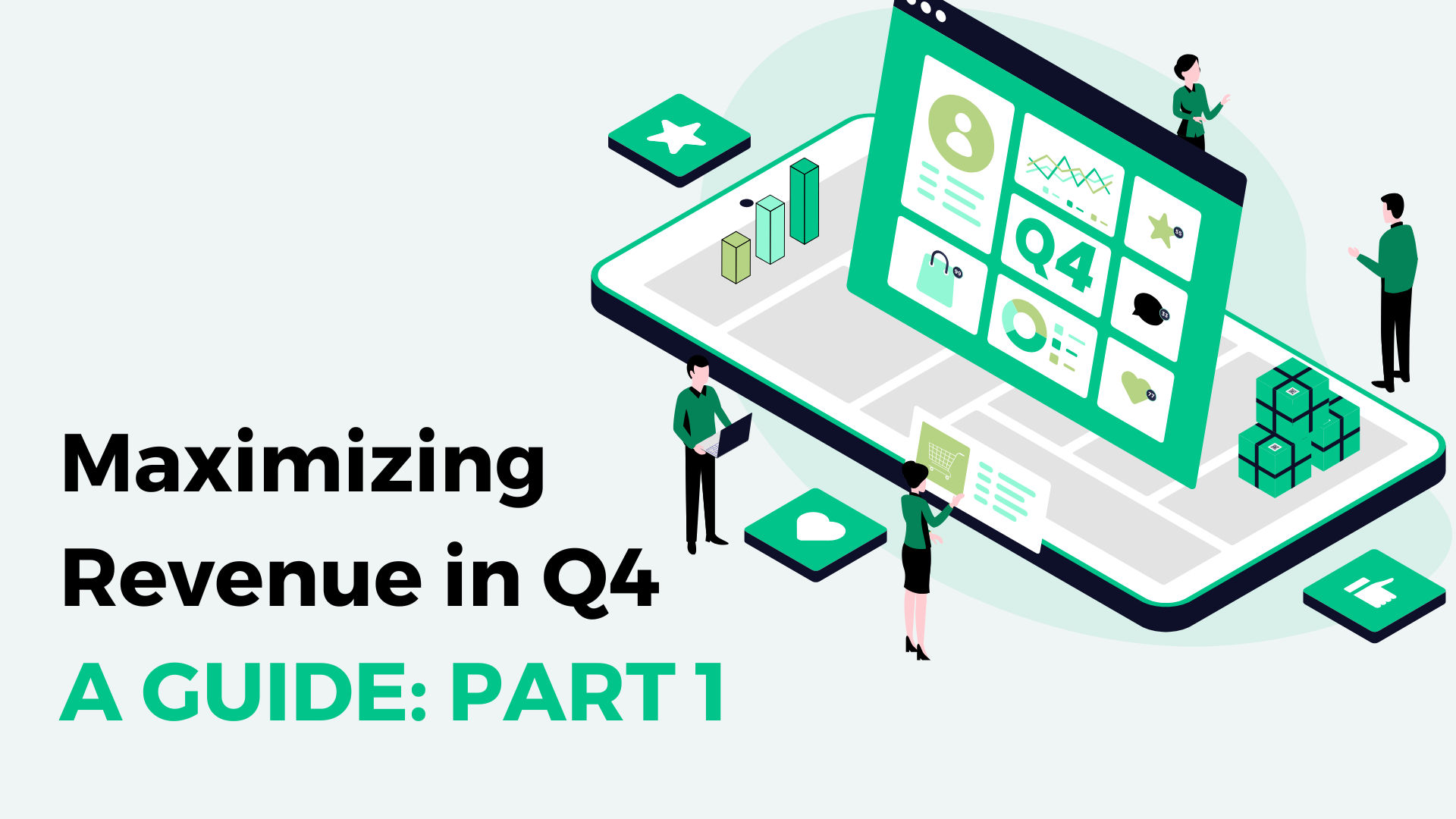Not so long ago, businesses realized their websites would be the first place customers interacted with their brands. So they optimized their websites to create an excellent experience for customers, leads, and casual browsers alike.
Things have changed since then. A Pew Research study discovered that 85% of Americans now own smartphones. According to data compiled by mobile experts WebFX:
- 52.2% of web traffic is generated from mobile devices
- 61% of consumers report they’re more likely to buy from mobile-friendly sites
- 52% of pay-per-click actions come from mobile devices
- 66% of emails are read on a smartphone or tablet
Innovative businesses understand that these days, just having a website isn’t enough. Mobile connectivity and optimization are crucial.
That said, there are right ways and wrong ways to go about this. Here are the most common wrong ways.
8 Signs You Need to Optimize Your Website for Mobile
1. Poor Reality Checking
To see how truly mobile-friendly your site is, access it via various mobile devices. Use as many different devices as you can, whether that means keeping a company-owned library of phones and tablets on-site or asking your friends to do a quick spot-check.
You can also use this Google mobile-friendly testing tool.
If any of these turn up poor results, you have a problem.
What to Do About It
In these situations, it’s best to act like Santa Claus. Make a list of the problems, and check it as many times as necessary. Identify the causes, solve the issues, and see how it does during your next reality check.
2. Bad Mobile Form Responses
Mobile forms can be a problem for many mobile interfaces because they take up room and formatting is tricky. Coding for interaction with a device keyboard is more complex than it should be.
Worse, regular traffic reports don’t always show this problem exists. They’ll show navigation to the page, including the form, but nothing about how frustrating it was to interact with it.
Your best sign there’s a problem is in the forms themselves. You can expect a few to be abandoned mid-process or to have nonsensical responses, but if this happens often, that could mean your forms are too hard to use on some devices.
What to Do About It
If you’re getting weird responses to your forms from mobile, field-test them on various devices. You’ll get your best results from people who haven’t interacted with the form or even the whole site since they have no context.
3. High Cart Abandonment Rates
Customers might abandon a purchase for many reasons, but one of those could be you’ve made the process frustrating on mobile devices.
You can find this statistic quickly enough in your analytics. Hopefully, you have some recovery automation in place for it already. Use your analytics to determine if cart abandonment happens more often on mobile than regular browsing. If so, there’s an issue with your mobile shopping cart.
What to Do About It
Start with a mobile audit of your online shopping cart. Watch especially for slow loads, confusing navigation, too-large images for small screens, and popups that make it hard to buy what you’re selling.
If any of those appear, they are the most likely culprits for this problem. If not, you may have to dig deeper into the code for your mobile shopping experience.
4. An Empty To-Do List
An empty to-do can be a good sign since it shows your team is completing all of their tasks. But it can also indicate that you’re not doing enough.
If your tasks are getting completed but you’re unhappy with your mobile statistics, it could be a sign you’re not maintaining the site and checking it regularly enough.
What to Do About It
Check your business systems. For large companies, this could be a policies and procedures manual. For small businesses, it could just be a set of automated reminders or handwritten notes.
Either way, make sure they include time and processes for things like:
- Annual assessment and redesign for the site overall
- Running mobile audits and tests
- Viewing the site on various devices
- Speed-testing site loading times
- Checking touch aspects
- Auditing plug-ins for updates and usage
These tasks and more should be part of your regular mobile experience maintenance. If they’re not, theor absence could be costing you.
5. High Bounce Rates
Your bounce rate is the percentage of people visiting your site and leaving after viewing the initial page. Your analytics should show this rate, and you should be able to find out if your bounce rate is different between mobile and regular interactions.
Your web people should know what number constitutes a good or bad bounce rate in your industry. If your mobile bounce rate is considered higher than average, this is a strong indication your mobile browsing experience needs work.
What to Do About It
Compare your bounce rates for mobile site visits, regular site visits, and the industry norms. You’ll find four different possibilities, each with its own solution:
- Regular and Mobile Are Better Than Industry Norms: Your site is solid, including mobile. Nothing here shows you need better optimization.
- Regular and Mobile Are Worse Than Industry Norms: You need to work on your site in general. It may need mobile optimization later, but you have more urgent tasks right now.
- Mobile Is Worse Than Regular: Your site needs mobile optimization.
- Regular Is Worse Than Mobile: You are mobile-optimized and may want to see how you could improve your regular website.
6. Dropping Conversion Rates
Dropping conversion rates are a problem for any business. They mean lost sales, which means lost revenue and reduced profits. They’re easy to spot but sometimes harder to diagnose since many things could be causing them.
It’s easy to spot the issue if your site isn’t mobile-friendly because conversion rates will drop from mobile connections, but not from other purchase methods.
What to Do About It
Start by walking through the buyer’s journey on your website, using as many different mobile devices as you can. Look for issues like tricky navigation, poor form formatting, trouble seeing or interacting with product details, and annoying popups.
When you find them, fix them one at a time and see how that impacts conversions.
If the dropping rates happened suddenly, it also pays to look at what you changed for your mobile presence immediately before the drop. This can be the first set of clues for fixing the problem.
7. Walls of Text
Does your web copy include large blocks of uninterrupted text? That’s already a problem, even for regular browsing.
People don’t want to read a wall of text, even on the large screens of their workstation or laptop. So think about how much information they want to read on the screens of their phones and tablets.
If your site has paragraphs more than three lines long on a regular monitor, you’re in danger of losing people on mobile.
What to Do About It
Audit your site’s individual pages, looking for paragraphs longer than three lines. Cut those into smaller sections. Convert some into bullet lists or other elements with plenty of white space. All of these will improve a mobile user’s experience.
Also, consider converting some text into video. It’s more engaging than text and capitalizes on the strengths of mobile browsing.
8. Horizontal Navigation
Traditional computers have a landscape-oriented screen — one that’s wider than it is tall. But although most sites are designed to scroll downwards rather than sideways, that’s not always how they appear on the user’s screen.
This problem is exacerbated on mobile, where vertical scrolling has been the norm since the beginning. A horizontally-navigated screen is enough trouble for mobile users to give up and abandon the site altogether.
What to Do About It
This is another solution centered around testing and fixing. Check your sites on a desktop monitor, a laptop, and various mobile devices. If any of them requires horizontal navigation to interact with a page, then it’s likely many mobile users need to do the same.
If that’s the case, it’s time to dig into your code and find out why.
Final Thought
One last sign your site isn’t mobile-optimized is customers or leads telling you so. Keep an eye on your social media feeds and online reviews for anything that suggests your site was hard to navigate. If you can, contact those reviewers with a free offer in exchange for more details. Then follow up on those details and fix the problem.
Do similarly with your existing customers. Remain alert, especially for side comments that mention something minor in passing. This isn’t just an opportunity to fix something subtle that’s broken. It’s a chance to wow them with your responsiveness and active listening.
Michelle Reed is a freelance business journalist based in Miami, Fla.




